“Organ meats are the most concentrated source of just about every nutrient, including important vitamins, minerals, healthy fats and essential amino acids.”
~ Dr. Sarah Ballantyne
Aren’t Organ Meats Toxic?
That’s a common misconception. We hear that the liver processes toxins and we think therefore it stores them. Not at all! The liver is a filter, not a sponge. It processes the toxins out of your body, and if you have too many toxins for it to process, they get packaged and stored primarily in fatty tissue, not the organs. That’s why if you’re eating conventional meats, the advice is to choose lean. (Organic, grassfed meats, on the other hand, have beneficial nutrients in their fats, because those animals weren’t exposed to many toxins.)
Not only are organ meats toxin-free, they’re actually superfoods. That’s because they have very important jobs to do and need a lot of nutrition to accomplish it all. They are packed full of vitamins, literally 10-100 times more than muscle meat. They also contain different amino acids than muscle meats, so incorporating them into your diet gives you more balanced nutrition overall. That’s why experts in the field of autoimmune healing recommend them highly.
Dr. Terry Wahls has a nutrient table in her book, The Wahls Protocol, where she lists the best sources for each vitamin and mineral. She’s famous for recommending we eat 6-9 cups of vegetables daily, so I expected those to top the list, but the food that appeared most often was liver. It led the chart in the following categories: Vitamin A, B2, B3, B5, B9, B12, Zinc, Carnitine, Lipoic Acid, and CoQ10. And other organ meats weren’t far behind. That’s why Terry recommends we eat 12 ounces of organ meat weekly. Dr. Sarah Ballantyne, author of The Paleo Approach, recommends we eat even more. She eats them almost daily for breakfast.
What If I’m a Picky Eater?
You might be thinking Sarah and Terry and I, and everyone else you see eat organ meat, are naturally more adventurous eaters. Not so! I was an incredibly picky eater as a child, and while I expanded my palate slightly as an adult, I never touched organ meat until embarking on a healing diet. Terry was a vegetarian for over a decade, so you can bet organ meat wasn’t her first foray into meat consumption. And Sarah resisted organ meat as well for her first paleo year. So, what changed for all of us? A desire to heal. The science is clear: we need nutrition to reverse autoimmune disease, and these are the most nutrient-dense foods available.
Where Can I Buy Organ Meat?
So, the next question is: where do you find them? Check with your local farmers, ethnic markets, or even the meat counter or freezer section of your grocery store. If you strike out locally, there are online vendors as well.
Can I Take a Supplement Instead?
I have a lot of recipes below that I encourage you to try, but if you’re looking for an easier alternative, there is one available. Chris Kresser is a leader in the ancestral health and functional medicine communities, and he considers organ meat a superfood. However, after working with thousands of patients, he learned that many didn’t want to prepare organ meats at home. So, he created a high-quality supplement that combines 100% grass-fed liver, heart, kidney, pancreas, and spleen so you can get all of these nutrients easily. Learn more here.
Chicken Liver Recipes
I consider these the gateway organ meat, because they’re mild in flavor, easy to prepare, and full of all those nutrients I mention above. You don’t even need a recipe. Just melt a tablespoon of your favorite fat in a skillet, fry the livers a few minutes per side, add a little sea salt, and serve. However, just because you don’t need a recipe, doesn’t mean a little creativity in the kitchen can’t make them taste even better:
Chicken Liver Fried “Rice” from Phoenix Helix
Bacon Wrapped Chicken Livers from Dishes Delish
Balsamic Chicken Livers with Grapes from A Squirrel in the Kitchen
Bolognese Sauce with Chicken Livers and Zoodles from Healing Family Eats
Hidden Superfood Italian Meatballs from Dr. Amy Myers
Easy Chicken Liver Pate from The Castaway Kitchen
Cranberry Chicken Liver Pate from 50 Shades of Avocado
Chicken Liver Pate (Low FODMAP) from Sweet Treats
Pork and Chicken Liver Terrine with Spiced Apple Compote from Autoimmune Wellness
Liver and Blueberry Muffins from Healing Family Eats
Chicken Heart Recipes
Easy to prepare, these are high in all of the B vitamins, including the powerful B12. Did you know that B12 deficiency can actually mimic autoimmune disease, and that correcting this deficiency, can sometimes eliminate symptoms?
Simple Marinated Chicken Hearts from Phoenix Helix
Rosemary Chicken Hearts from The Honest Spoonful
Chicken Hearts with Carrot and Apple from Cooking Melangery (omit pepper for AIP)
Beef (or Bison) Liver Recipes
When people think of organ meat, they usually think of beef liver. It’s a nutrient powerhouse with a strong flavor. Some people love it, and for them, liver and onions is the way to go. In fact, that’s the most common organ meat recipe to grace a restaurant menu. Others like myself find it too strong, so patés help mask the flavor. And others combine it with regular ground meats in “hidden liver” recipes. You want to find a way to get this into your diet. Why? Remember in the introduction how I mentioned that liver is a top food source for 10 vitamins and minerals. It’s nutrient-density incarnate. If you try all these recipes and still don’t love it, you can get liver through a supplement.
Bacon Beef Liver Paté with Rosemary and Thyme from Autoimmune Wellness
Beef Liver Pâté with Strawberries, Basil and Balsamic from Healing Family Eats
50/50/50 Burgers from the Paleo Mom
Meatloaf with Hidden Liver and Veggies from Unapologetically AIP
Liver with Bacon, Onions and Collard Greens from Healing Family Eats
Rosemary and Garlic Beef Liver Appetizer from A Squirrel in the Kitchen
Beef Heart Recipes
In addition to a hefty dose of B vitamins and numerous minerals, beef heart is the best food source of CoQ10. People spend a lot of money in the health food stores for that supplement, because it’s a powerful antioxidant and absolutely necessary to the function of our mitochondria (the energy center of the cell that is the focus of the Wahls Diet.) If you marinate beef heart, it has a taste and texture similar to steak. The hard part is getting over the fact that it looks like a heart. I don’t think this is a bad thing. Organ meats remind us where our meat comes from and inspires more mindfulness and gratitude. Heart also requires some special preparation – you need to remove the tough outer pericardium prior to cooking. The first link is my recipe, and has a video tutorial.
Beef Heart with Chimichurri Sauce from Phoenix Helix
Beef Heart Stew from Primal Palate
Beef Heart Jerky from Real Food RN (omit pepper for AIP)
Breakfast Heart Fry from Lichen Paleo, Loving AIP
Crockpot Beef Heart Stuffed With Bacon from the Paleo Drummer
Beef Kidney Recipes
If you’ve mastered the taste of liver, you might be ready to try kidney, in my opinion, the most strongly flavored organ. If that’s the case, why eat it? Because it has a unique nutrient profile. While beef liver may top the charts with many vitamins and minerals, kidney takes the lead with selenium. A 4-ounce serving provides 228% of our daily needs, making up for those days when we don’t quite get enough. Selenium supports all the antioxidants in our body, and also helps prevent mercury toxicity.
Offal (But Not Awful) Stew from the Paleo Mom
Beef Kidney Kofta with Spinach and Figs from Kari Owens
Oxtail Recipes
Outrageously Good Oxtail from Joanna Frankham
P.S. When you’re in the healing diet community, you hear about the importance of bone broth from day 1. Oxtail makes incredible broth – flavorful, gelatinous and nutrient-dense.
Beef Tongue Recipes
Many people recommend these as gateway organ meats, because their flavor is similar to regular meat. That’s because the tongue is basically a muscle, so it really doesn’t fall into the category of nutrient-dense organ meat. Add to that the fact that it looks like a tongue, and it doesn’t get my top recommendation. That said, it’s inexpensive, and if you can get over the appearance, quite easy to prepare:
Boiled Beef Tongue from Instructables (omit peppercorns for AIP)
Beef Tongue Barbacoa from A Clean Plate
Sweetbreads Recipe
These are actually the pancreas and thymus, and can be hard to source. But if you find them, they’re mild in flavor, and one of my personal favorites. You can buy lamb, veal or beef sweetbreads, all of which are incredibly high in all of the B vitamins, vitamin C, iron, potassium, phosphorous, zinc and selenium.
Grilled Sweetbreads with Balsamic Glaze from Phoenix Helix
Lamb Liver Recipe
Vitamin A is essential to immune system health, and lamb livers contain 25,000 iu per 3.5 ounce serving. And this is the bio-available form, which means our bodies can use it right away. Vitamin A from plant foods need to go through a conversion process first, and much of the vitamin is lost during that process. So, eat some lamb liver today:
Lamb Liver Paté with Lime and Blueberries from Zesty Paleo
Easy Liver and Onions by Terry Wahls (omit pepper for AIP)
Sourcing Quality Bacon
Many of these recipes add bacon, because it just makes everything taste better. However, there’s a huge range in quality when it comes to bacon. You want to avoid anything that contains chemical additives, and also beware of unnamed spices since they usually contain nightshades. I share some AIP-friendly options in this blog post.
Shellfish Recipes (Organ Meat Substitutes)
When I interviewed Terry Wahls, she said that when we eat shellfish, we eat the whole animal, and that means we’re eating organ meat. So, if you aren’t ready to eat organ meat from animals, start here. Shellfish can be incredibly nutrient-dense. In fact, The Paleo Mom just did a post about this. Here are the top 3 choices in this category:
- Oysters are the most nutritious, high in zinc, B12 and selenium. they are also one of the few foods that are rich in Vitamin D, which helps regulate our immune system. Try this easy recipe from Mark’s Daily Apple: Coconut Milk Oyster Stew (use an AIP-friendly fat like avocado or olive oil).
- Clams are rich in B12, selenium and iron. Try this recipe from What Great Grandma Ate: Clam Chowder.
- Mussels are high in B12, selenium and manganese. Try this recipe from Wendi’s AIP Kitchen: Moules Marinière.
You May Also Be Interested In
This recipe roundup was first published in 2014 but is updated annually. Last update 12/13/24.

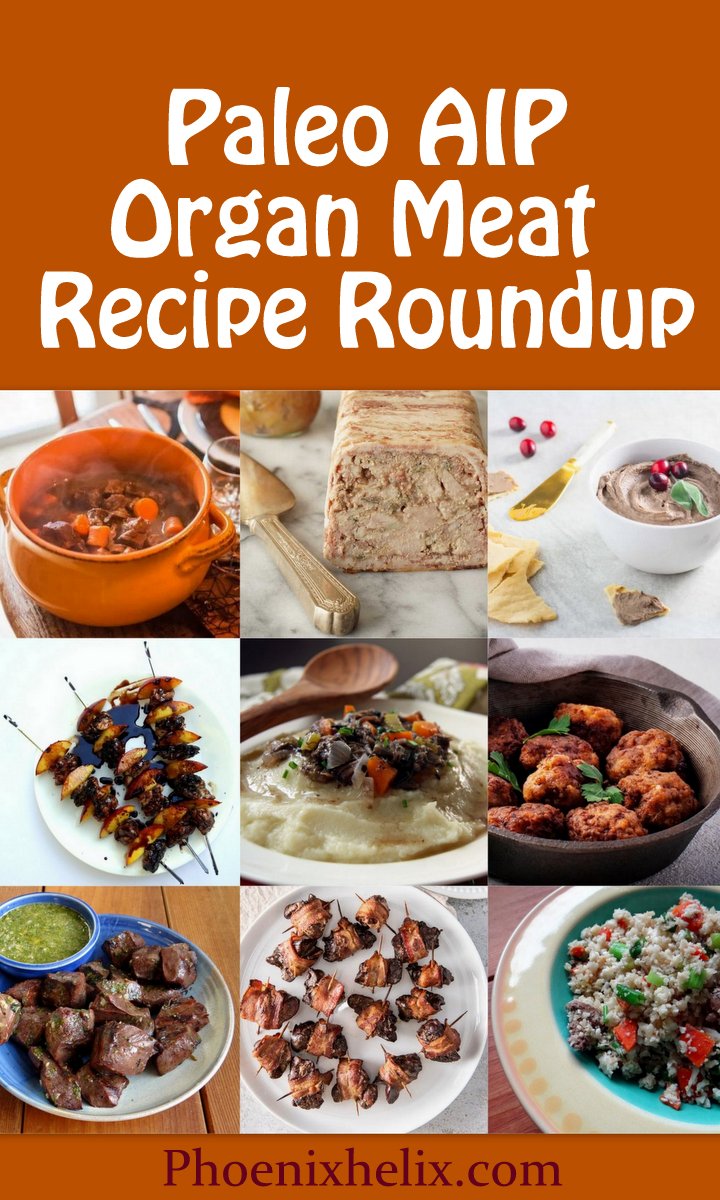
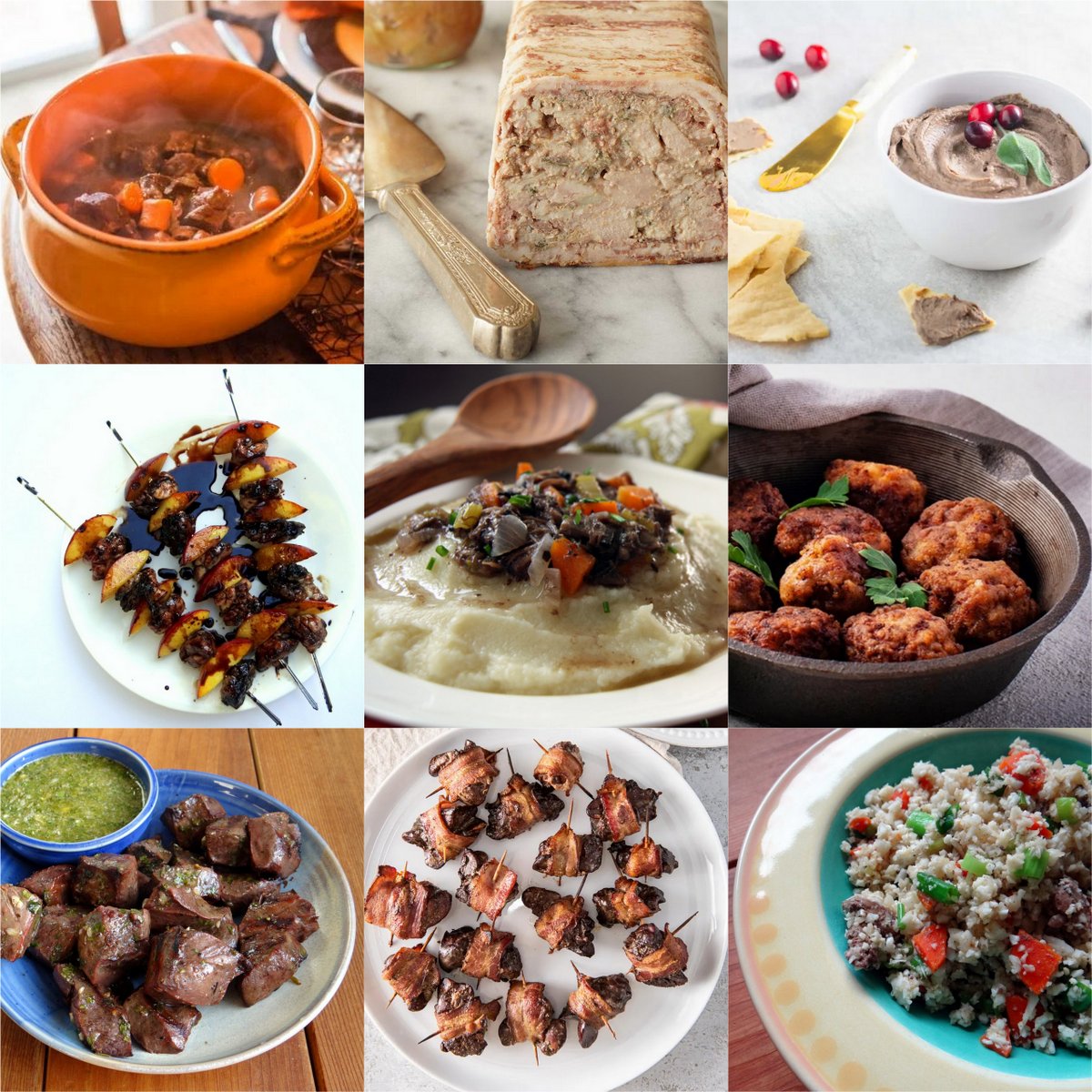
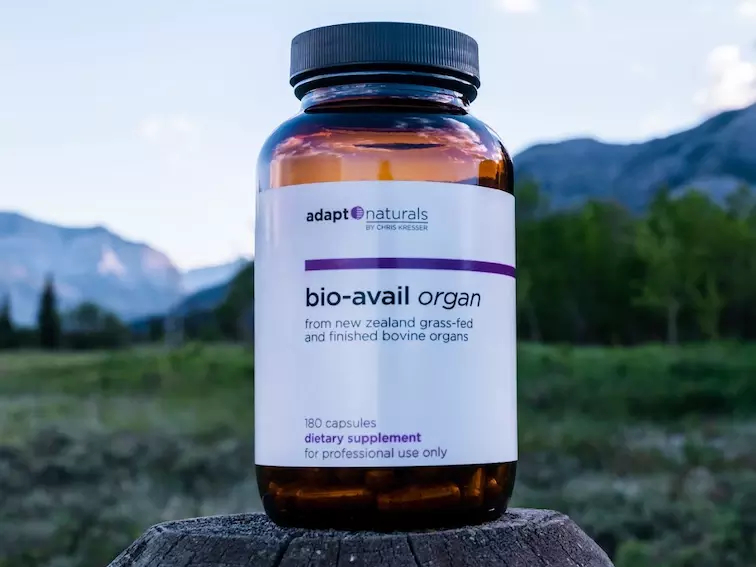
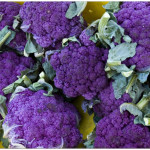





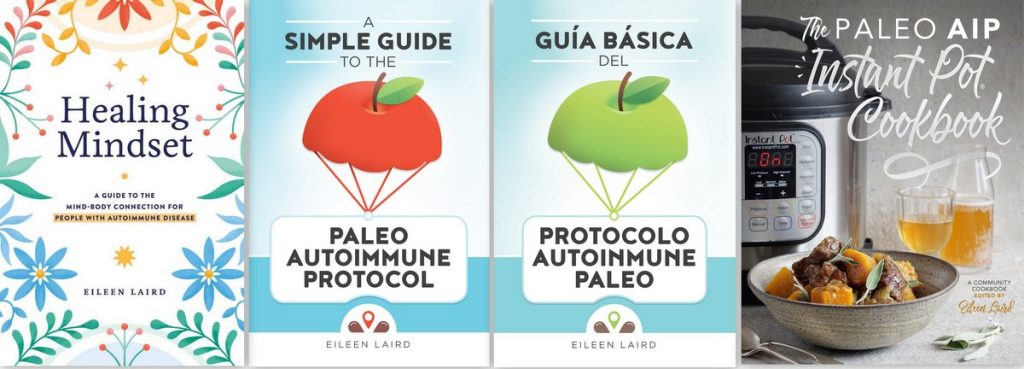
Do grass fed, organic organ meet supplements count?
Absolutely! Cooking organ meat is less expensive, but if it’s something you simply cannot do, high-quality organ meat supplements are a great alternative.
What are the typical symptoms of a histamine intolerance? Every time I eat beef or chicken liver, I get diarrhea almost immediately after. Do you think this could be histamine-related or a food sensitivity?
Hi Karen. That would take further testing for you to determine. If you’d like to know more about histamine intolerance, listen to podcast Episode 36.
I recently learned from a German woman to add chopped apple to my beef liver and onions. What a revelation! So good. Really blends the flavors well, and very simple. Any kind of apple will do.
Great tip, Barbara! It makes complete sense. Many people like to dip apples in liver pate, so combining them in a skillet would be a similar flavor profile. Thank you.
I cannot eat organ meat because of histamine , c’est dommage !…
Hi Frederique. Hopefully this will be a temporary condition for you. Histamine intolerance is usually a symptom with a separate root cause, and it can be healed. Listen to my podcast interview with Alison Vickery for more information.
oh thank you so much for the information!
As far as chicken livers- I can find organic but it’s not pastured. Would this be ok? Or should I go for other types of liver instead (I’ve found grass fed beef liver- but can only get it down using the pill method!).
Hi Emily. Organic is fine, even it’s not pastured.
I recently bought an organic pastured hog. I had the butcher to give me the organs as well as the usual cuts of meat. Any pork offal recipes?
The best source I know is the book Beyond Bacon. It’s a nose-to-tail paleo cookbook for pork, and is perfect if you just bought a whole pig. Pork offal tends to have a stronger flavor than beef or chicken, so it’s good to start with recipes that are designed specifically for pork.
I love seeing that other people eat offal! I actually love beef tongue, I gew up eating it (my mom was ahead of her times!). It’s perfect in the summer, boiled, cold, sliced and sprinkled with soy sauce (soy sauce isn’t AIP but that’s how we ate it). I’ve got one in my freezer waitng to be made into a post 🙂
Yay for your Mom! I’ll look forward to seeing that recipe. Sub in a little coconut aminos and it’s AIP. 😉
Great list! Thanks for including my chicken liver spread!
My pleasure.
Perfect timing! I’m just starting my offal adventures & have taken baby steps with bison liver. Thank you so much for pulling all these recipes together.
Creative cook that you are, I sense some great offal recipes coming to the roundtable.
This is a fantastic list, Eileen! I’m always looking for offal inspiration, I’ve pinned this post and shared it 🙂 Thank you!
Thanks for the share, Erin!
What a great article Eileen!! Thank you for this info. AND you’ve inspired me to start making my liver pate again. I have some in the freezer and just bought a bunch of pastured chicken livers from a local farmer. You rock.
Jen
Isn’t it fun when inspiration comes full circle?